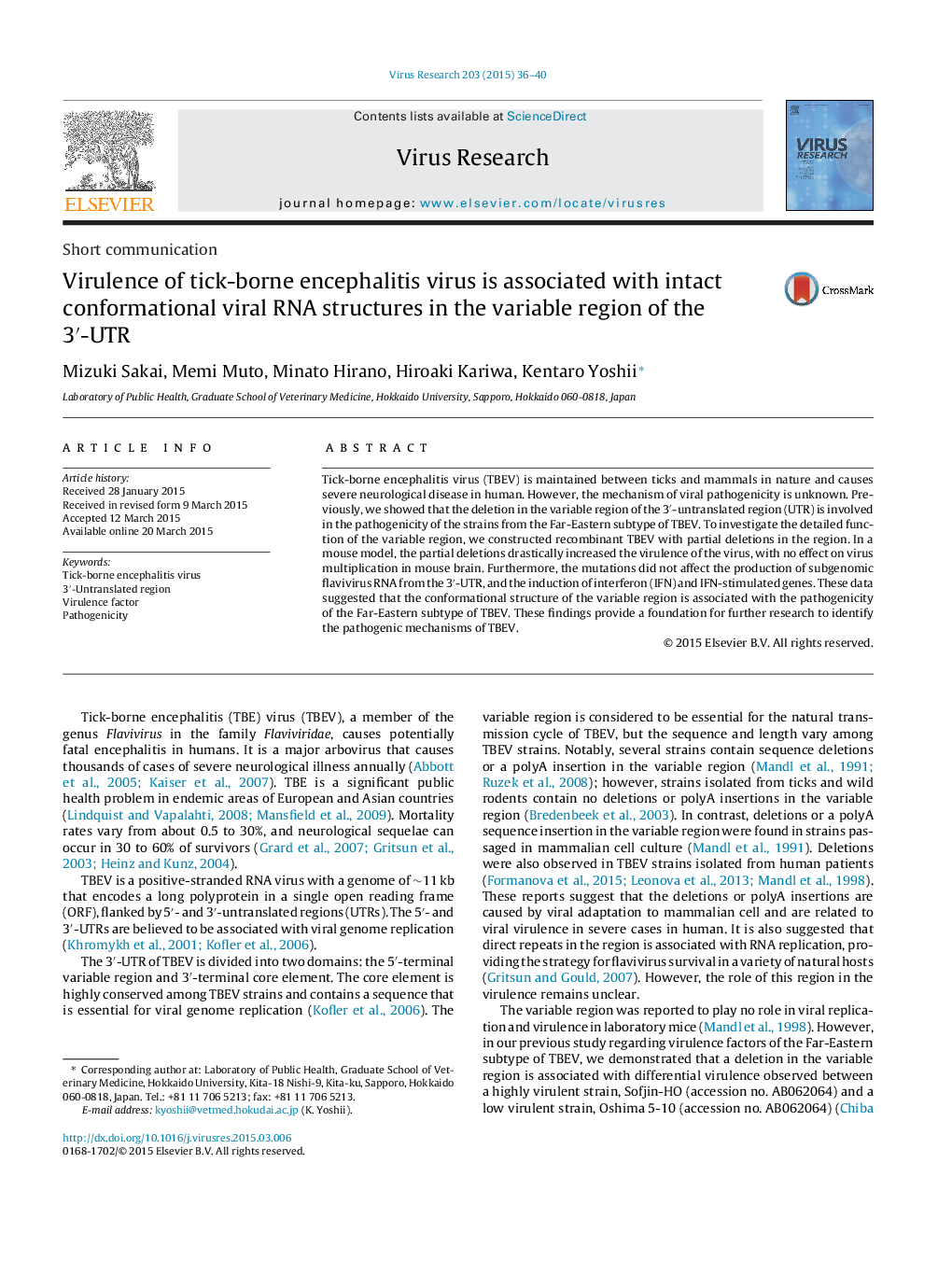| Article ID | Journal | Published Year | Pages | File Type |
|---|---|---|---|---|
| 3428278 | Virus Research | 2015 | 5 Pages |
•We examined the functions of the variable region of 3′-UTR of TBEV.•The partial deletion or polyA insertion in the region increased the virulence of TBEV in mice.•The mutations did not affect the production of subgenomic flavivirus RNA and IFN responses.•We concluded that the intact structure of the region is involved in the pathogenicity of TBEV.
Tick-borne encephalitis virus (TBEV) is maintained between ticks and mammals in nature and causes severe neurological disease in human. However, the mechanism of viral pathogenicity is unknown. Previously, we showed that the deletion in the variable region of the 3′-untranslated region (UTR) is involved in the pathogenicity of the strains from the Far-Eastern subtype of TBEV. To investigate the detailed function of the variable region, we constructed recombinant TBEV with partial deletions in the region. In a mouse model, the partial deletions drastically increased the virulence of the virus, with no effect on virus multiplication in mouse brain. Furthermore, the mutations did not affect the production of subgenomic flavivirus RNA from the 3′-UTR, and the induction of interferon (IFN) and IFN-stimulated genes. These data suggested that the conformational structure of the variable region is associated with the pathogenicity of the Far-Eastern subtype of TBEV. These findings provide a foundation for further research to identify the pathogenic mechanisms of TBEV.
